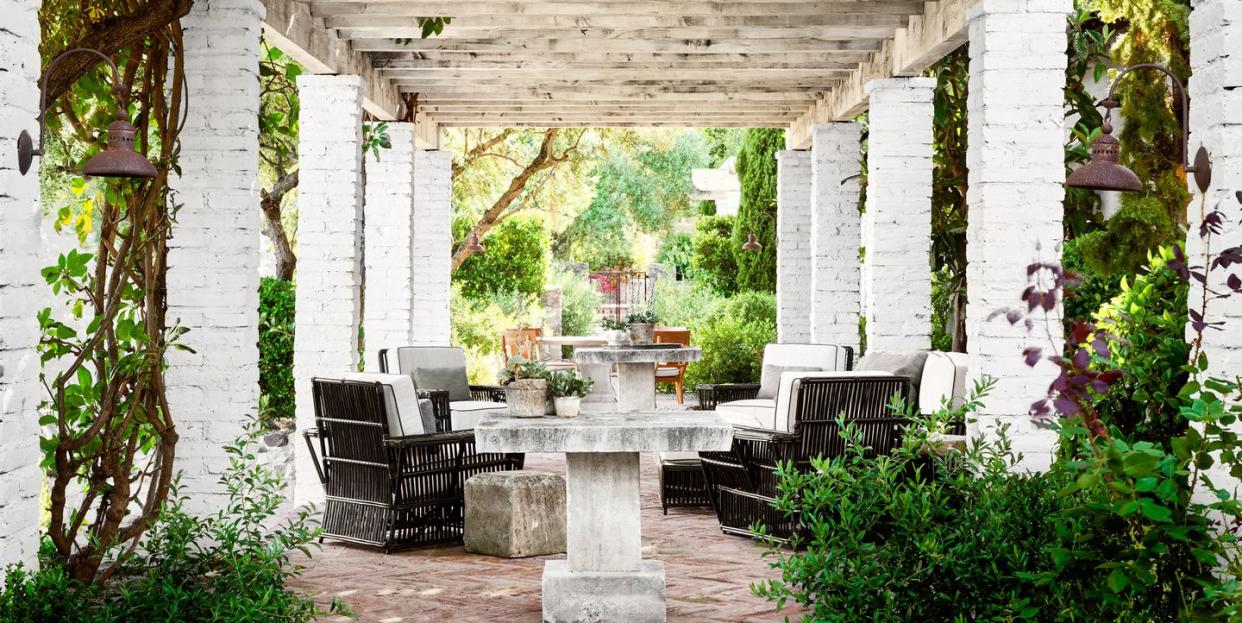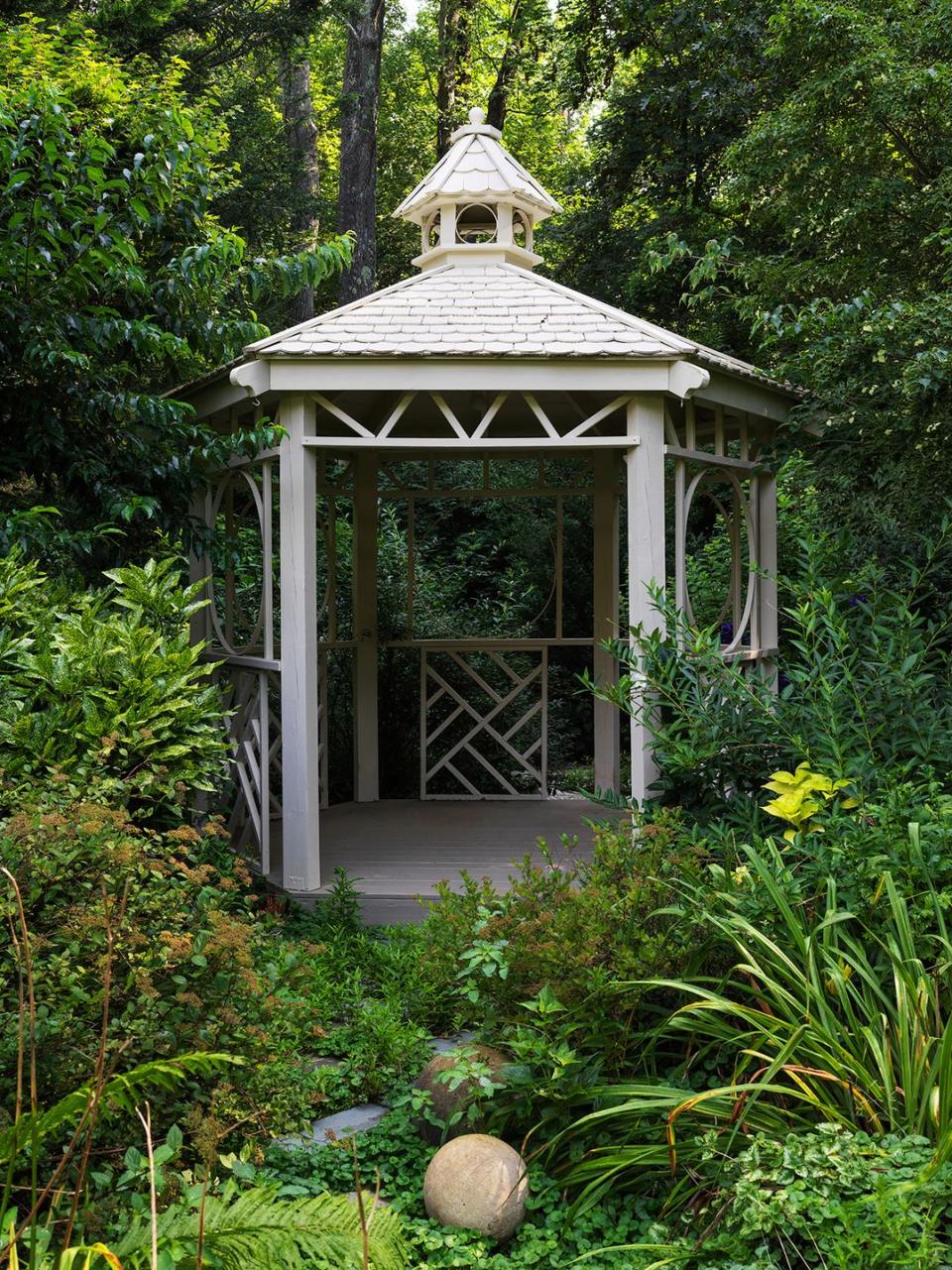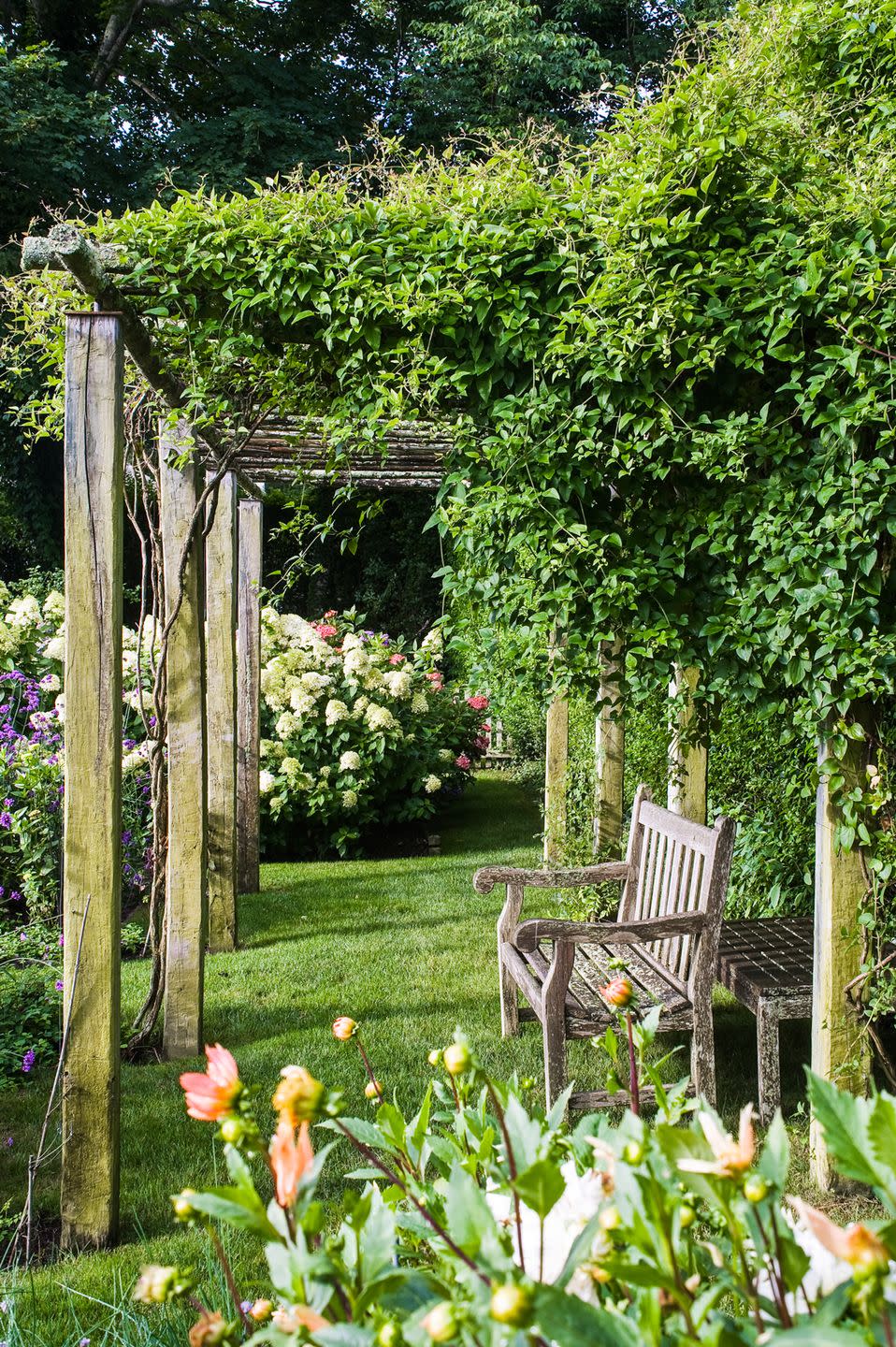What's the Difference Between a Pergola and Gazebo?

In the great outdoors, we have little control over when the sun hits and when it doesn’t. Whether you find yourself on a mountain getaway or at some paradisiacal beachside destination, there’s always the chance that the searing heat of summer will necessitate recurring sunscreen applications or a trusted wide-brimmed hat. But in your own backyard, you have full control over how you choose to enjoy the open air. This year, go all out with a pergola or gazebo that offers a stylish place to relax outside beneath the cool comfort of shade.
Don’t know which one is right for you? Designer Stephania Kallos recommends asking yourself a number of questions up front. “Are we creating shade or cover for an outdoor space, or are we making an outdoor room? Does this tie into the architecture, get fully carved into the architecture, or stand alone as an independent object? Do we want just shade, or shade and protection from the elements?” But these are just the preliminary considerations. To help you decide which structure will elevate your outdoor space, let’s dive into the pros and cons of each.
How Are Gazebos and Pergolas Similar?
In terms of how they service a backyard space, pergolas and gazebos meet many of the same needs, providing shade and privacy. Both can be built to accommodate just a few people or as many as 20. As for building materials, many are built in wood and iron with roofs of the same material or a lighter material like bamboo or rush.
Regardless of which structure you’re leaning toward, both maximize the use of a home’s outdoor space and can add value to your home. General consensus puts return on investment at somewhere between 50 and 80 percent, according to finance comparison site SuperMoney. That means that for every $1,000 you spend, $500 to $800 would be recouped when the house sells.
What Is a Gazebo?
Historically, gazebos have been around for much longer than pergolas. Found in Egyptian garden plans dating back to 1400 BC, the gazebo has offered luxurious lounging options for some of our earliest predecessors. Today, gazebos are a popular choice for those with a yard big enough to house such a structure, often calling to mind the setting of a Victorian garden with its ornate, layered style.
Gazebos are generally four-sided structures but can expand to six or eight sides. Some have one entrance, while some are open on all sides. They are designed with a full, continuous roof that offers around-the-clock protection from the elements. The roof is often pitched so that rain can easily run off it. Many also have built-in flooring that is designed to sit directly on grass. They also often have a floor that is raised above ground level for a better vantage point. Some gazebos boast benches built inside.
These delightful structures are ideal for a space that is facing the sun directly and meant for use early or late in the day, Kallos notes. “They can feature vertical shading—either drapes, a rolling screen, shutter, or wall.” Flowers and flora can be interwoven or incorporated on the walls or columns for added charm.

What Is a Pergola?
A pergola, on the other hand, is a much more modern structure that complements modern architecture, though it was first introduced in the late medieval period in the 1640s. Structurally, pergolas offer a more sleek and sensible option in comparison to gazebos. Pergolas aren’t always freestanding structures but can be attached to the house or integrated into the main structure of the home.
A pergola roof is usually an open horizontal lattice of interlocking beams (made of wooden, aluminum, steel, or PVC) that offer partial shade. Plants and vines often hang from the beams to enhance the cover offered. Retracting fabric canopies are also popular add-ons for more complete shade, though they don’t offer supreme weather protection.

Should I Choose a Pergola or a Gazebo?
The question of which to opt for in your next home project largely comes down to three considerations: the amount of weather protection desired, the location, and the budget. While both structures are available at Home Depot or Lowe’s in a wide range of kits for self assembly, a basic pergola is cheaper and more within the scope of an enthusiastic DIYer.
Taking the long view, a vine-wrapped pergola can be impractical as “you need to be patient while the plants grow and it requires a lot of maintenance,” Kallos notes. And yet, the decorative possibilities of a pergola are far more open-ended, as floral overhangings and interchangeable rooftop covers offer many possibilities, whatever your look or lifestyle.
California-based Leslie Bennett of Pine House Edible Gardens says her clients often ask for garden pergolas, which fare well in year-round summers. In fact, to the zealous plantsman, Bennett suggests that a pergola is the perfect addition to a backyard garden, acting as a support for vining fruits or flowers. “They’re also a great way to integrate food and flower production into a garden space or create an immersive garden experience with blooms or fruit surrounding a seating area,” she adds. And if you don’t have a green thumb, they can also house a myriad of lovely florals that like to latch onto something. “Climbing roses, wisteria or even nonvining subtropical plants like brugmansia can be trained for seasonal blooms,” says Bennett.
You Might Also Like

